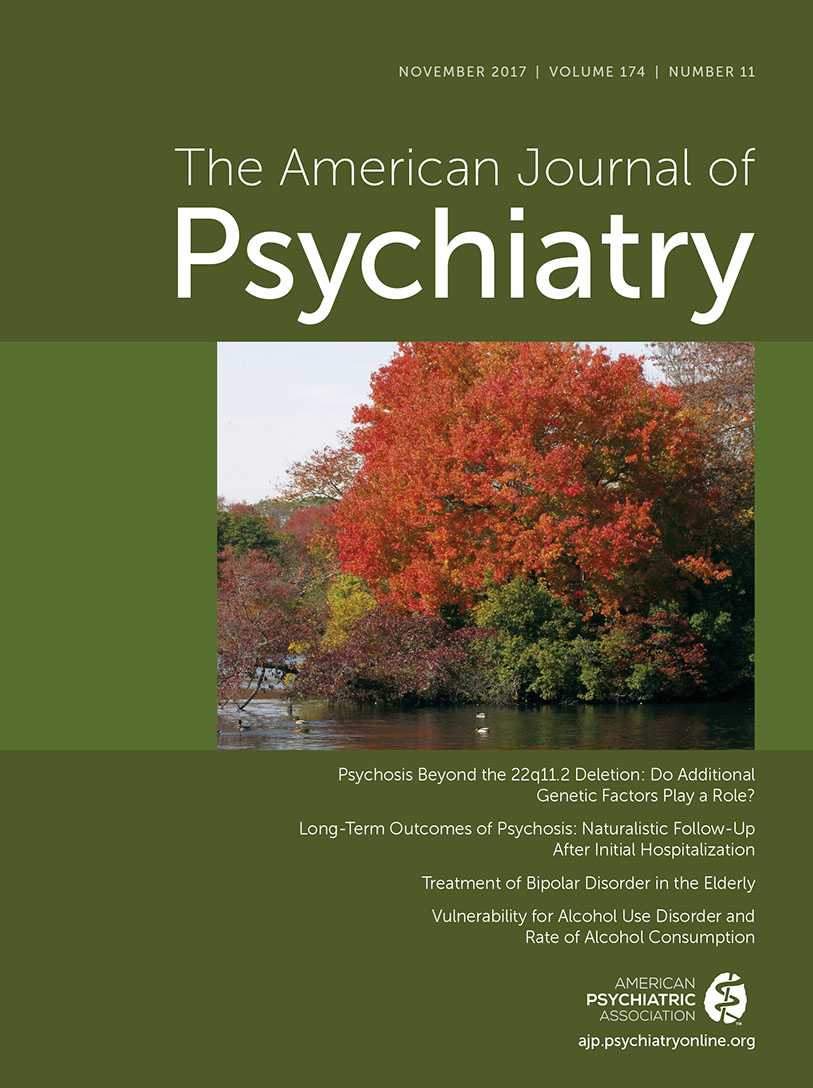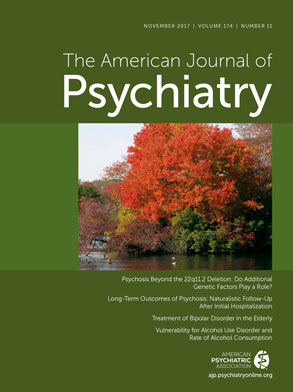To the Editor: It is widely accepted that threat exposure activates the amygdala and elicits behavioral defense reactions, physiological responses, and subjective states of fear in humans. Our central thesis is that the changes in behavior and physiology can be dissociated from the changes in subjective state, with the former depending on the amygdala but the latter depending more heavily on cortical areas. We are pleased to address criticisms of this central idea from Fanselow and Pennington.
Fanselow and Pennington cite evidence that patients with amygdala lesions have both reduced subjective experiences and behavioral and physiological responses to threatening stimuli. However, the same group they referenced later reported opposite findings (
1), as did Anderson and Phelps (
2). The latter findings are consistent with results from studies using subliminal stimulation in healthy humans and studies of humans with “blindsight.” Both sets of studies show that threats that are not consciously reportable and that fail to elicit conscious fear nevertheless elicit amygdala activity and physiological responses (
3).
In contrast to Fanselow and Pennington’s suggestion, we do think that the study of behavioral and physiological defense responses inform understanding of subjective states. Even though these phenomena are clearly dissociable, changing behavior and physiology can indirectly modulate the subjective states of fear and anxiety because the circuits for these phenomena, though distinct, interact.
Noting that threat exposure leads patients with anxiety disorders to manifest changes in both subjective fear and behavioral physiology, Fanselow and Pennington argue that clinical data contradict our framework. They also note that subjective ratings of fear across the acquisition, extinction, and re-emergence of a fear memory, and subjective trait-like assessments of anxiety, are correlated with autonomic responses. However, contrary to their assertions, a wealth of findings show that subjective reports of fear are poorly correlated with measures of behavior and physiology (
4–
9). Further, recent studies using a novel, sophisticated approach to brain imaging show successful threat extinction in the absence of the arousal of conscious fear (
10).
Fanselow and Pennington argue that physiological and behavioral measures predict the efficacy of both behavioral and pharmacological interventions. This claim not only contradicts our views but also the views of other researchers. For example, Griebel and Holmes (
11) summarized the state of efforts to use neuroscience research to develop novel anxiolytic medications and to predict efficacy. In their words, this work has been “disappointing” because rodent research findings have rarely translated into effective treatments for problems related to fear and anxiety. A similar conclusion was reached by pharmaceutical scientists who found that the rodent model did not lead to new treatments (
12).
Fanselow and Pennington also suggest that our framework forces insights into the neurobiology of fear gained from animal studies to be lost. In our view, data from animals are important for clinical understanding, especially when their interpretation is restricted to behavioral and physiological responses that can be similarly measured in humans and animals. Adopting this approach would foster more realistic expectations for the translation of basic science work into therapies for anxiety disorders.
Fanselow and Pennington suggest that the unreliability and semiquantitative nature of subjective report led to a shift away from its use. Clearly, subjective reports have limitations (e.g., as an index of motivations underlying behavior or as a fully accurate index of past experiences). However, they have unique strengths, which make them an important indicator of people’s immediate experiences (
13,
14). Moreover, they are at least as reliable as physiological responses to threats (
15). Because of these features, neuroscience is not shifting away from subjective reports; rather, research on consciousness is thriving (
16,
17), and subjective report is the gold standard in this field. As a state of consciousness, subjective fear can be explored using subjective report as well as novel quantitative assessment methods (
18–
20).
Finally, Fanselow and Pennington suggest that an emphasis on subjective experience and self-report turns psychiatry in the direction of a “bleak past.” But leading anxiety researchers argue that self-report generates “valid measures of key constructs, some of which cannot be measured in any other way” and that self-report is “sometimes the best measure of the construct of interest” (
21). We agree and hold that failure to acknowledge the subjective state as an important, independent area of scientific inquiry ignores vital aspects of patients’ clinical experiences. Moreover, focusing on the subjective state frees psychiatry from the bleak legacy of behaviorism and reductionism. At the same time, it elevates patients’ experiences to a legitimate focus of both treatment and neuroscience research on novel therapeutics.

